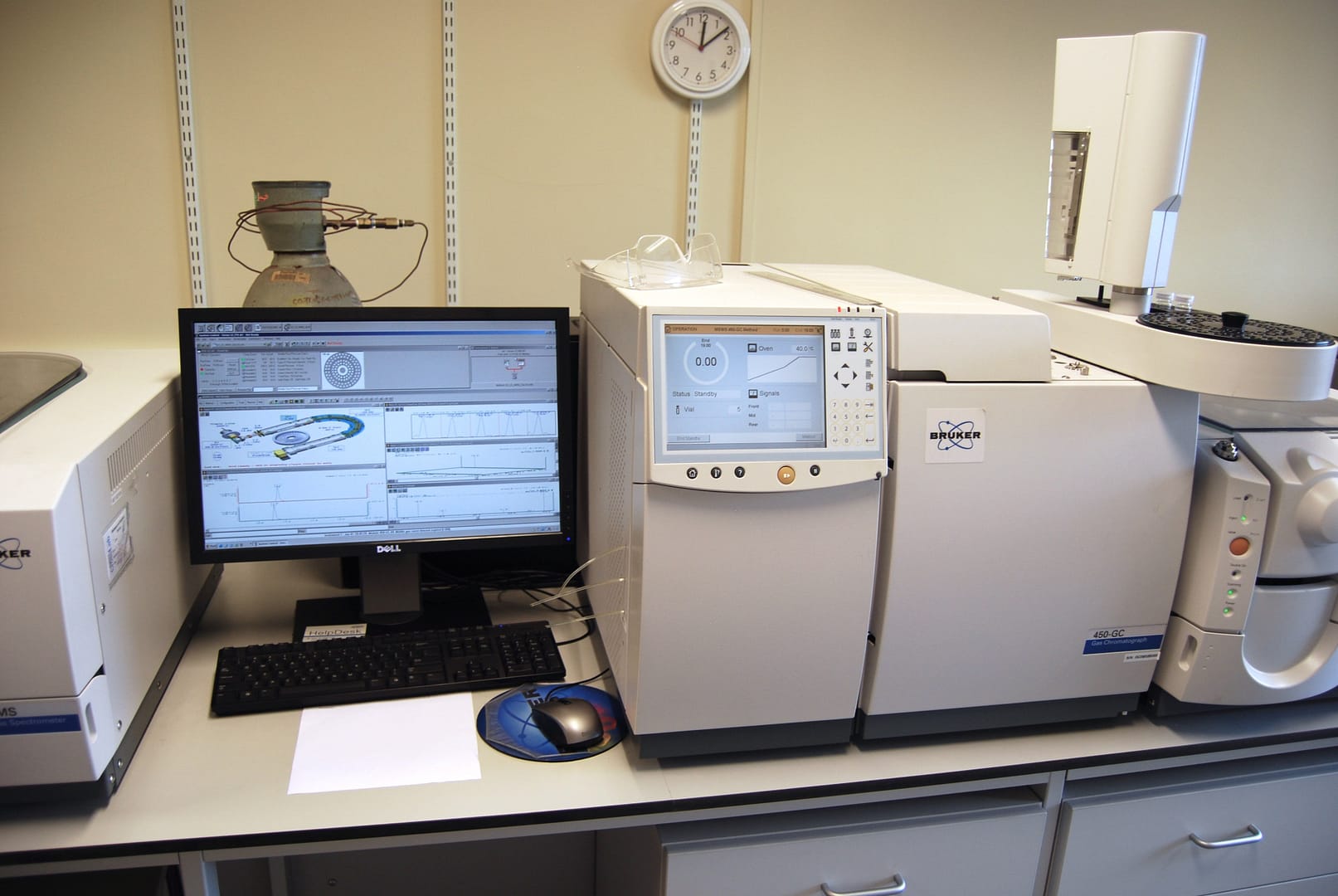Food Safety
The Food Safety service offered by Premier Analytical Services is one of the most extensive in the UK. We offer exemplary quality at competitive prices.
Premier Analytical Services is able to offer customised packages for our clients, providing the appropriate degree of assurance. Our service includes more than just testing; we offer advice on sampling, due diligence requirements, legislation updates and interpretation.
Allergens

It is estimated that one in three of the total UK population (almost 20 million) will develop an allergy at some point in their lives (Royal College of Physicians June 03). Potential causes include food, insect bites, drugs and latex. A food allergy is an immune system response to a food that the body mistakenly believes is harmful. Once the immune system decides that a particular food is harmful, it creates specific antibodies to it.
The next time the individual eats that food, the immune system releases massive amounts of chemicals, including histamine, in order to protect the body. These chemicals trigger a cascade of allergic symptoms that can affect the respiratory system, gastrointestinal tract, skin, or cardiovascular system.
The most common causes (accounting for >90%) of food allergies are:
Peanut and nut, milk, eggs, seeds (such as sesame) fish, shellfish, soy and wheat.
Contaminants
Process contaminants are substances that can form as a result of chemical changes in foods brought about by the processes used during manufacture e.g. cooking, drying, fermentation and smoking. While the formation of undesirable substances in foods as a result of processing has been known for some time (e.g. chloropropanols in savoury flavours produced by acid hydrolysis, N-nitroso compounds in cured meats), the occurrence of other process contaminants in foods such as acrylamide, glycidyl fatty acid esters and fatty acid esters of monochloropropanediols (MCPDs) are relatively recent and significant developments that continue to challenge the food industry and regulators alike.

Microbiology

Microbial Shelf Life Assurance Testing by Premier Analytical Services can build the confidence you need in your product’s safety and quality throughout shelf life.
Maintenance of product safety and quality throughout shelf life is the aim of all food producers.
Deterioration due to microbial activity can be a major threat to both the quality and safety of most food products. It is therefore essential that a systematic approach is taken to the determination of product shelf life.
Microbial shelf life assurance testing provides the fundamental information to confirm and conclude a microbial risk assessment. It is the most effective way to validate controls designed to maintain product integrity. And, if time is an issue we have analytical models that can avoid impractical lengthy assessments.
We offer a range of microbial assurance testing:
Shelf life validation & verification testing
Challenge testing
Abuse testing
Microbial shelf life assurance testing by premier analytical services can help you to determine, challenge and extend the shelf life of both new and existing products.
Foreign Body Investigation
Horror stories concerning the discovery of foreign bodies in food are common. Nearly everybody has had a bad experience or knows someone who has.
The potential for damage to brand reputation is enormous, as is the potential for involvement in expensive litigation.
It is therefore essential that those involved in the food supply chain are able to respond quickly to every complaint with accurate information regarding the three main concerns:
What is it?
Where did it come from?
How did it get there?

Illegal Dyes

The colours permitted for use in food are defined in the Colours in Food Regulations 1995 and in subsequent amendments. Therefore the presence, at any level, of any other colours is illegal.
There were two incidents in 2008 involving illegal Sudan dyes in imported spices form India. Sudan dyes are synthetic, industrial dyes traditionally used for colouring waxes, plastics, oils and shoe & floor polishes and therefore not permitted in food at any level. However, the deep red colour was perceived to enhance the aesthetic qualities of some foods for example, spices (such as chilli powder and paprika) and palm oil.
More recently, several ingredients have been implicated in food scares involving illegal colours, for example Methyl Yellow in curry powder in Belgium, France & Germany and safflower (natural colour) from China containing Orange II. It is vital therefore that food manufacturers remain alert to the potential use of illegal dyes in their supply chains.
In late June 2006 the FSA circulated details of the adoption of a harmonised Europe-wide approach for dealing with incidents of contamination of spices and other food ingredients with illegal dyes. This is based upon the ‘’As Low as Reasonably Practicable’’ approach, recognising adventitious rather than deliberate contamination may be present at very low levels. As such an action limit of 0.5ppm has been established, such that detection at levels below 0.5ppm should not trigger removal of products from the market.
PAS offers a UKAS accredited illegal dye testing service that includes a total of 21 dyes and colours and offers detection limits down to 10ppb by LC/MS/MS.
Food Safety
The Food Safety service offered by Premier Analytical Services is one of the most extensive in the UK. We offer exemplary quality at competitive prices.
Premier Analytical Services is able to offer customised packages for our clients, providing the appropriate degree of assurance. Our service includes more than just testing; we offer advice on sampling, due diligence requirements, legislation updates and interpretation.
Allergens

It is estimated that one in three of the total UK population (almost 20 million) will develop an allergy at some point in their lives (Royal College of Physicians June 03). Potential causes include food, insect bites, drugs and latex. A food allergy is an immune system response to a food that the body mistakenly believes is harmful. Once the immune system decides that a particular food is harmful, it creates specific antibodies to it.
The next time the individual eats that food, the immune system releases massive amounts of chemicals, including histamine, in order to protect the body. These chemicals trigger a cascade of allergic symptoms that can affect the respiratory system, gastrointestinal tract, skin, or cardiovascular system.
The most common causes (accounting for >90%) of food allergies are:
Peanut and nut, milk, eggs, seeds (such as sesame) fish, shellfish, soy and wheat.
Contaminants

Process contaminants are substances that can form as a result of chemical changes in foods brought about by the processes used during manufacture e.g. cooking, drying, fermentation and smoking. While the formation of undesirable substances in foods as a result of processing has been known for some time (e.g. chloropropanols in savoury flavours produced by acid hydrolysis, N-nitroso compounds in cured meats), the occurrence of other process contaminants in foods such as acrylamide, glycidyl fatty acid esters and fatty acid esters of monochloropropanediols (MCPDs) are relatively recent and significant developments that continue to challenge the food industry and regulators alike.
Microbiology

Microbial Shelf Life Assurance Testing by Premier Analytical Services can build the confidence you need in your product’s safety and quality throughout shelf life.
Maintenance of product safety and quality throughout shelf life is the aim of all food producers.
Deterioration due to microbial activity can be a major threat to both the quality and safety of most food products. It is therefore essential that a systematic approach is taken to the determination of product shelf life.
Microbial shelf life assurance testing provides the fundamental information to confirm and conclude a microbial risk assessment. It is the most effective way to validate controls designed to maintain product integrity. And, if time is an issue we have analytical models that can avoid impractical lengthy assessments.
We offer a range of microbial assurance testing:
Shelf life validation & verification testing
Challenge testing
Abuse testing
Microbial shelf life assurance testing by premier analytical services can help you to determine, challenge and extend the shelf life of both new and existing products.
Foreign Body Investigation

Horror stories concerning the discovery of foreign bodies in food are common. Nearly everybody has had a bad experience or knows someone who has.
The potential for damage to brand reputation is enormous, as is the potential for involvement in expensive litigation.
It is therefore essential that those involved in the food supply chain are able to respond quickly to every complaint with accurate information regarding the three main concerns:
What is it?
Where did it come from?
How did it get there?
Illegal Dyes

The colours permitted for use in food are defined in the Colours in Food Regulations 1995 and in subsequent amendments. Therefore the presence, at any level, of any other colours is illegal.
There were two incidents in 2008 involving illegal Sudan dyes in imported spices form India. Sudan dyes are synthetic, industrial dyes traditionally used for colouring waxes, plastics, oils and shoe & floor polishes and therefore not permitted in food at any level. However, the deep red colour was perceived to enhance the aesthetic qualities of some foods for example, spices (such as chilli powder and paprika) and palm oil.
More recently, several ingredients have been implicated in food scares involving illegal colours, for example Methyl Yellow in curry powder in Belgium, France & Germany and safflower (natural colour) from China containing Orange II. It is vital therefore that food manufacturers remain alert to the potential use of illegal dyes in their supply chains.
In late June 2006 the FSA circulated details of the adoption of a harmonised Europe-wide approach for dealing with incidents of contamination of spices and other food ingredients with illegal dyes. This is based upon the ‘’As Low as Reasonably Practicable’’ approach, recognising adventitious rather than deliberate contamination may be present at very low levels. As such an action limit of 0.5ppm has been established, such that detection at levels below 0.5ppm should not trigger removal of products from the market.
PAS offers a UKAS accredited illegal dye testing service that includes a total of 21 dyes and colours and offers detection limits down to 10ppb by LC/MS/MS.
